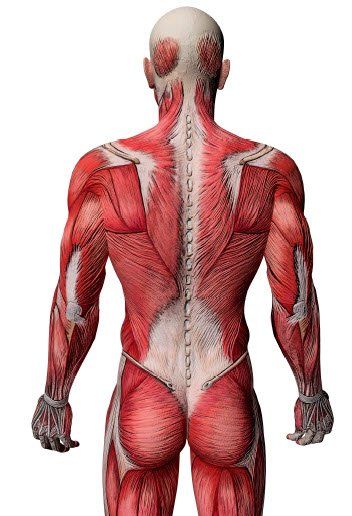"It is a well-known factthat the U.S. automobile industry spends more per car on health care than on steel."
Lee Iacocca
Former Chairman of Chrysler

"It is a well-known factthat the U.S. automobile industry spends more per car on health care than on steel."
Lee Iacocca
Former Chairman of Chrysler

Making matters worse, researchers have identified another, even more significant business cost of unhealthy employees — the cost of lost productivity from absent workers (absenteeism) and present workers (presenteeism) who can’t perform because of health-related impairments. This is a modern phenomenon and research shows that it now costs employers two to three times more than direct medical care, such as insurance premiums and pharmacy costs.
Looking at recent statistics for the cost of lost productivity due to common diseases, conditions, and risk factors is eye-opening.

In 2015 cardiovascular disease and strokes cost Americanbusiness more than $503 billion in lost productivity and health care expenditures.
In 2015, Alzheimer’s disease and other forms of dementiacost $172 billion in lost productivity and direct health care costs.
In 2014, the estimated cost of lost productivity due to cancerwas $18.8 billion. Lost productivity due to premature death from cancer was estimated to be $116.1 billion.
According to a 2014 study, workers with diabetes lost anaverage of fifteen percent of work time due to health problems.
In 2013, the most recent year for which statistics areavailable, arthritis was responsible for a $47 billion in lost earnings.
Depression accounts for $51 billion a year in lost productivity and absenteeism.
Lost productivity due to asthma costs business an estimated five billion dollars each year.

For most employers, direct health care costs are well documented and well understood. However, many organizations currently don’t pay enough attention to the hidden costs of avoidable sick days and presenteeism — the cost of employees who are on the job but not fully functioning because of real illnesses and medical conditions, including asthma, seasonal allergies, arthritis, migraines, depression, back pain, gastrointestinal disorders and diabetes.

In one study, chronic conditions alone were estimated to cost The Dow Chemical Company more than $100 million annually in lost productivity for its U.S. work force — the equivalent of 6.8 percent of total lab costs for the company.


Since ancient times, people have known that movement is an essential part of life. Today, however, a typical office worker sits at a desk for eight hours a day—frequently with poor posture—and seldom stands up.
Whenever the requirements of a job do not match the physical attributes of a worker, the worker is more prone to injury and lost productivity. Workplace injuries, a common cause of time off, cost employers and employees billions of dollars every year.
Some of the more common workplace injuries are carpal tunnel syndrome (a nerve entrapment at the wrist seen in computer users), low-back pain, tendinitis, bursitis, and neck pain or headaches.

Carpal tunnel syndrome (CTS) is the most expensive of all work-related injuries. Over his or her lifetime, a carpal tunnel patient pays about $30,000 in medical bills and lose hours of productivity from work absences.
CTS typically occurs in adults, with women three times more likely to develop it than men. The dominant hand is usually affected first, and the pain is typically severe. CTS is especially common in assembly-line workers in manufacturing, sewing, finishing, cleaning, meatpacking, and similar industries.
According to the U.S. Department of Labor, Occupational Safety and Health Administration (OSHA), repetitive strain injuries are the nation’s most common and costly occupational health problem, affecting hundreds of thousands of American workers, and costing more than $20 billion a year in workers compensation.
Carpal tunnel syndrome results in the highest number of days lost among all work related injuries. Almost half of the carpal tunnel cases result in 31 days or more of work loss according to National Center for Health Statistics.
Approximately 260,000 carpal tunnel release operations are performed each year, with 47% of the cases considered to be work related.-National Center for Health Statistics.

The use of hand-held phones and othermobile devices have created a condition known as “text-neck”
Americans send an average of 6 billion text messages a day, according to the Census Bureau. As technology advances, allowing us to do more tasks on smaller equipment, our bodies often pay the price. With a growing potential for injuries from technologies that we rely on, it’s important to minimize the risks.
One problem that is becoming more prevalent is neck strain from the over-use of mobile devices, or “text neck.”

STRESS RELATED CONDITIONS
Workplace stress causes approximately one million U.S. employees to miss work each day.
American Institute of Stress
Two-thirds of both men and women say work has a significant impact on their stress level, and one in four has called in sick or
taken a "mental health day" as a result of work stress.
American Psychological Association
Problems at work are more strongly associated with health complaints than are any other event. Workers who must take time off work because of stress, anxiety, or a related disorder will be off the job for about 21 days.
US Bureau of Labor Statistics

One common denominator that all of the previous mentioned health issues often have is the role that the spine and nervous system plays in the causation and contribution of these issues.
Though it widely accepted that spinal problems contribute to neck and back pain, a growing body of research show the relationship between spinal issues and a wide range of health issues,.
CARPAL TUNNEL
A study published in the medical journal The Lancet, found evidence of cervical neuritis (nerve irritation) in over 70% of all carpal tunnel syndrome patients.
90% of all carpal tunnel syndrome patients are found to have nerve root irritation in their cervical spine, a condition known as “double crush phenomena”
Journal of Neurology

HEADACHE
SOver 70% of all headaches arise from problems with the cervical spine and its related structures.
Canadian Family Physician
Headaches are frequently caused by compression of cervical nerve roots and prolonged tension of the neck muscles.
Basic Neurology
Headaches are more frequently caused by spinal stress than any other condition.
Journal of Occupational Trauma

Increasing evidence supports the need for workplace wellness programs and more companies than ever are implementing health and wellness strategies to reduce injuries, health care costs and long-term disability.
With additional benefits such as reduced absenteeism, higher productivity, reduced use of health care benefits and increased morale and loyalty, it’s not surprising more and more employers are choosing to implement workplace wellness programs within their companies.
Preventable health conditions makes up approximately 80% of the burden of all health conditions and 90% of all health care costs. Employers are beginning to realize they can take advantage of this statistic and work to provide services to decrease the occurrence of those preventable diseases.
Despite the United States spending more on health care than any other industrialized nation in the world, it remains the unhealthiest. With increased research and data on workplace wellness programs, it is becoming apparent there are very real benefits to implementing workplace wellness programs.
Employee wellness programs are now considered a potential high return on investment for employers due to rising health care costs. In fact, research now suggests employers get an average of $3.48 back in reduced health care costs and $5.82 in lower absenteeism cost for every dollar spent on employee wellness. Employers who live more healthy lifestyles have reduced sick leave, improved work performance, decrease health insurance costs, increased productivity and reduced overall costs.

There are many real benefits to workplace wellness programs. There is increasing evidence to support implementation of programs in all types of companies and businesses, big or small.
Decreased on-the-job productivity and employee absence because of health result in significant costs to employers above and beyond medical spending. Health-related work losses are estimated to cost US employers more than $260 billion each year, and may cost some companies more than direct medical expenditures.
Workplace Wellness Programs: The Benefits

Escalating health care costs continue to remain an issue of great concern for many health professionals, employers and insurance companies.
While the United States spends more on health care than any other industrialized nation in the world, its citizens are not the healthiest, in many respects.
Employees with more risk factors, including being overweight, smoking and having diabetes not only cost more to insure, they also pay more for health care than individuals with less risk factors.
To take a stand against this startling fact, many employers are now offering some type of workplace wellness program to offset the rising costs of health care.
Aside from helping improve the health of already at-risk employees, workplace wellness programs also have a huge impact on healthy individuals, raising awareness so employees with fewer risk factors remain in a lower cost group.
People spend more awake hours at work than anywhere else, on average 50 hours a week, so it’s up to employers to take aggressive action towards implementing workplace wellness programs. Corporate wellness programs play a key role in maintaining and improving employee relations and morale. Bottom line, a healthy, motivated workforce is vitally important to a company as a whole.

POSTURE AND HEALTH




